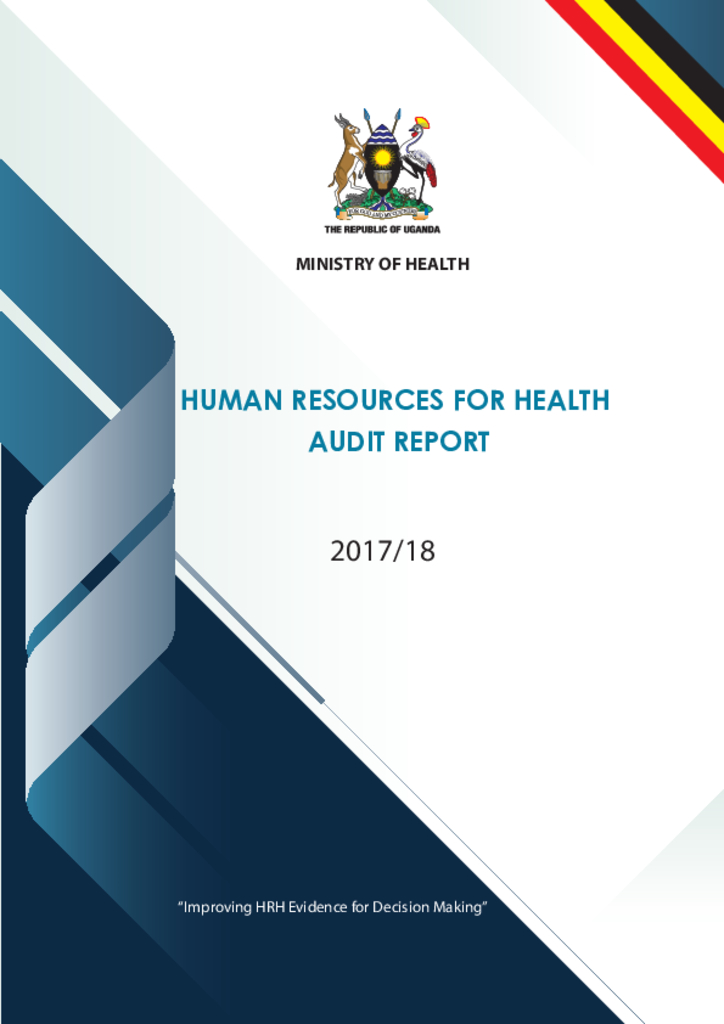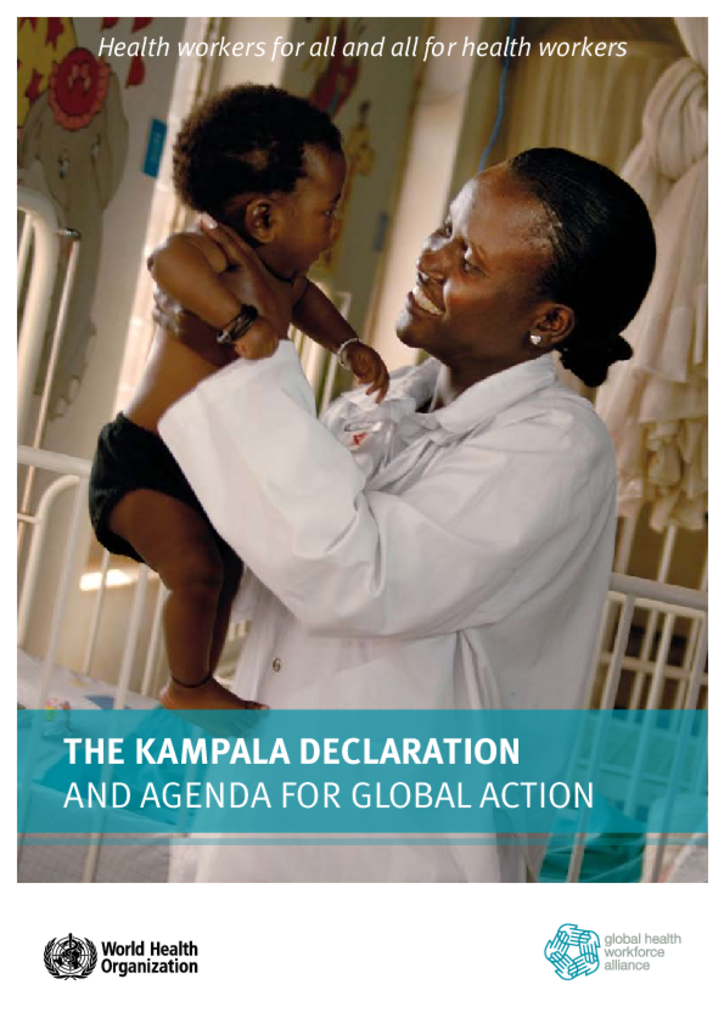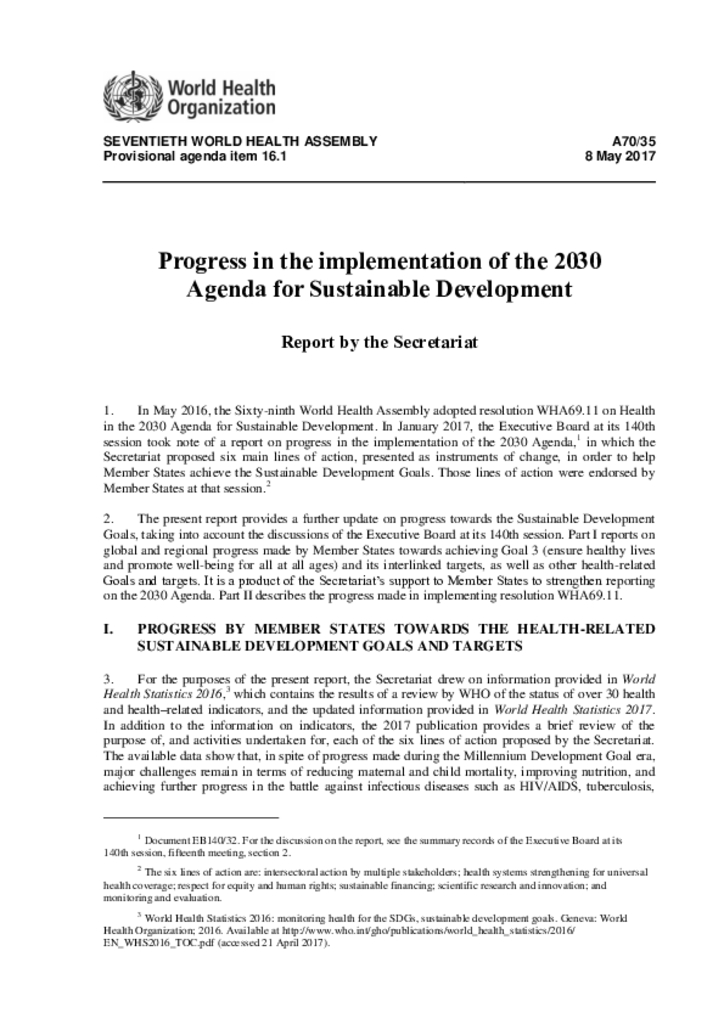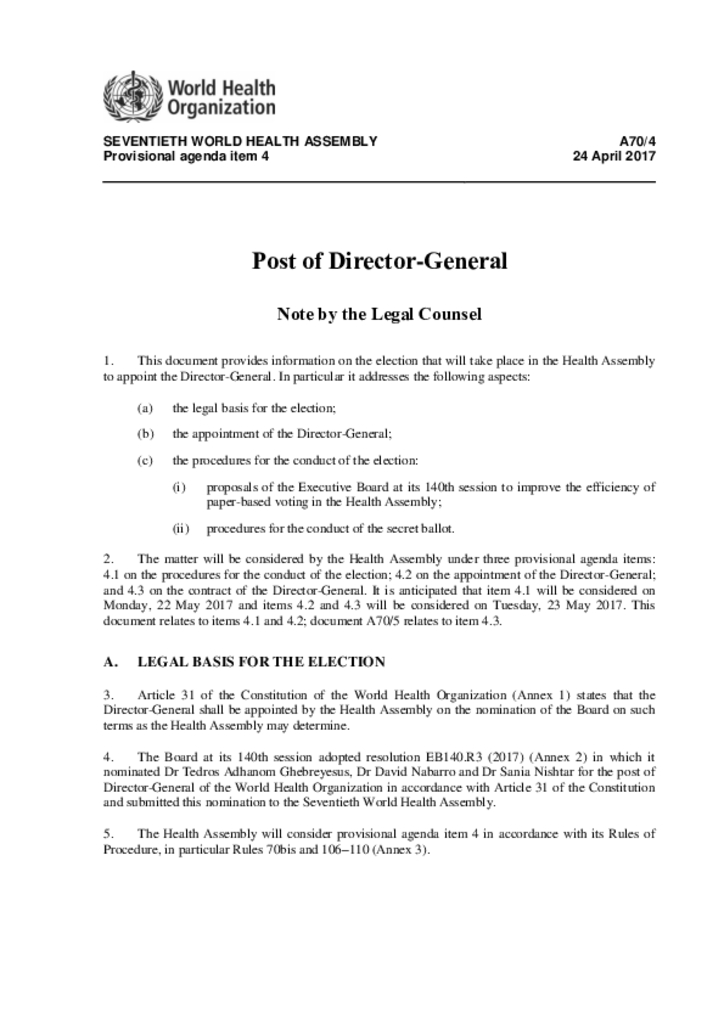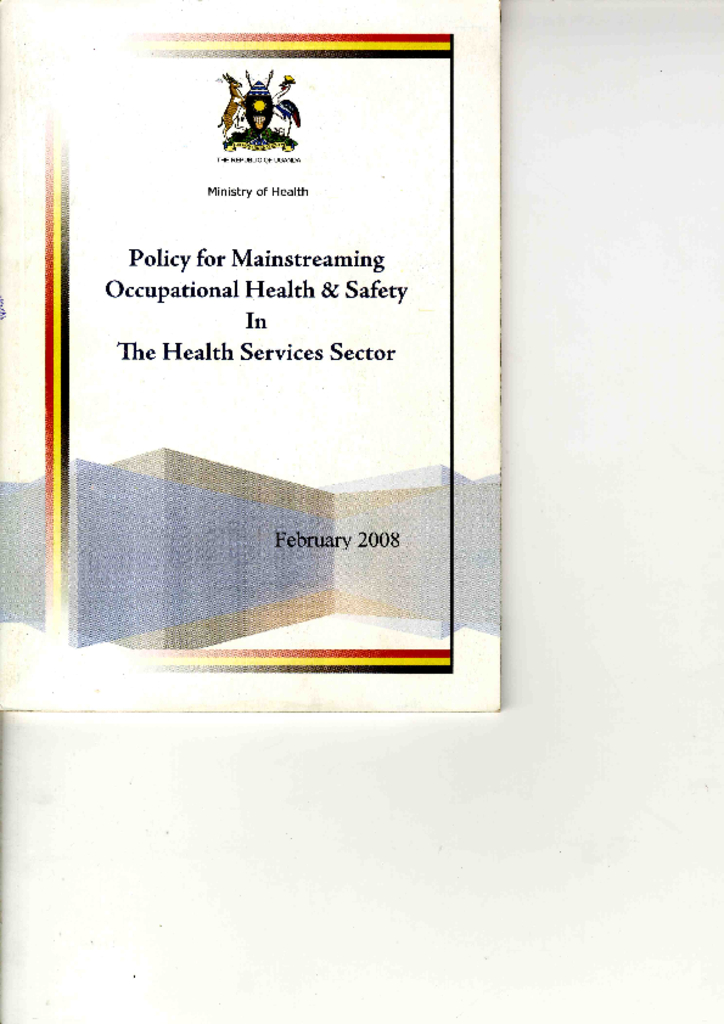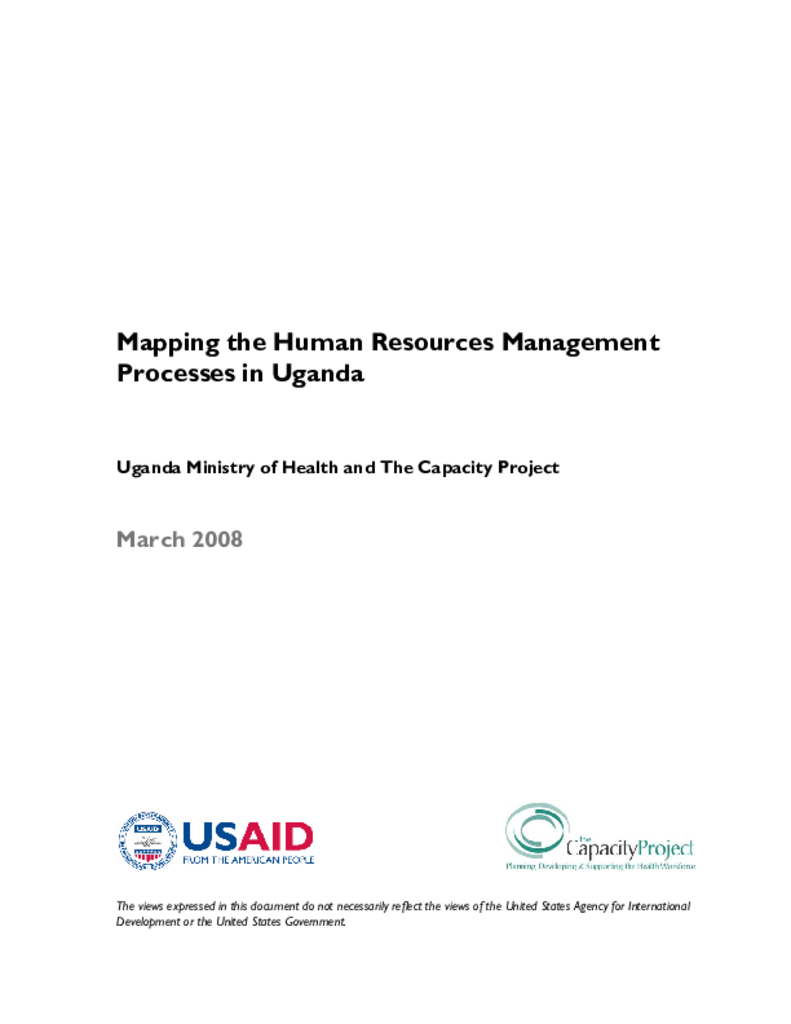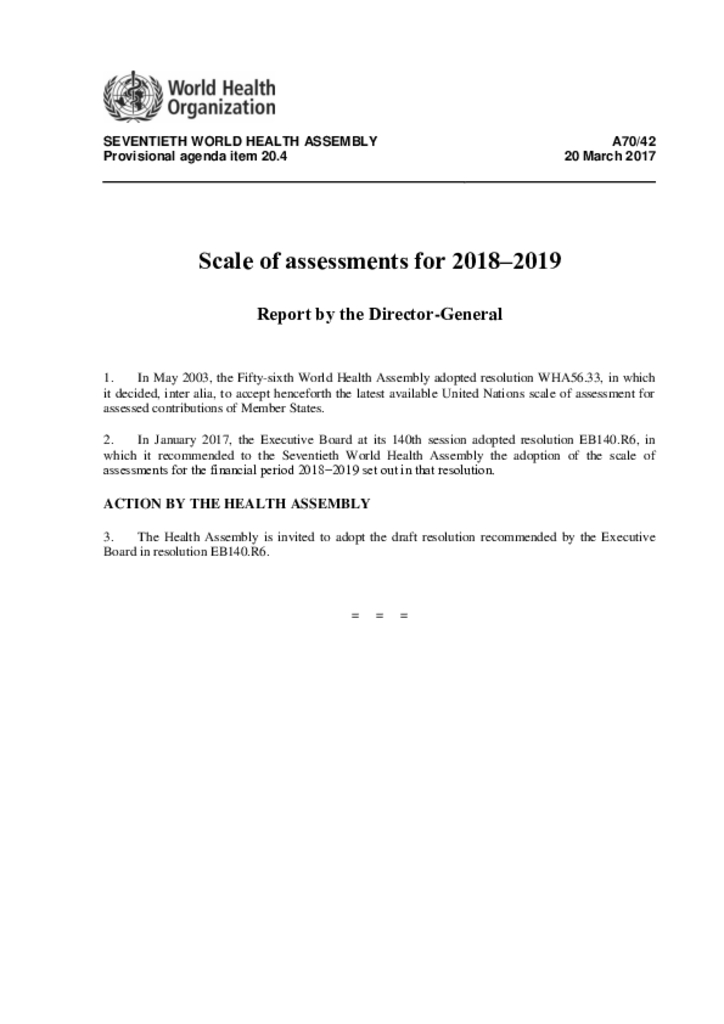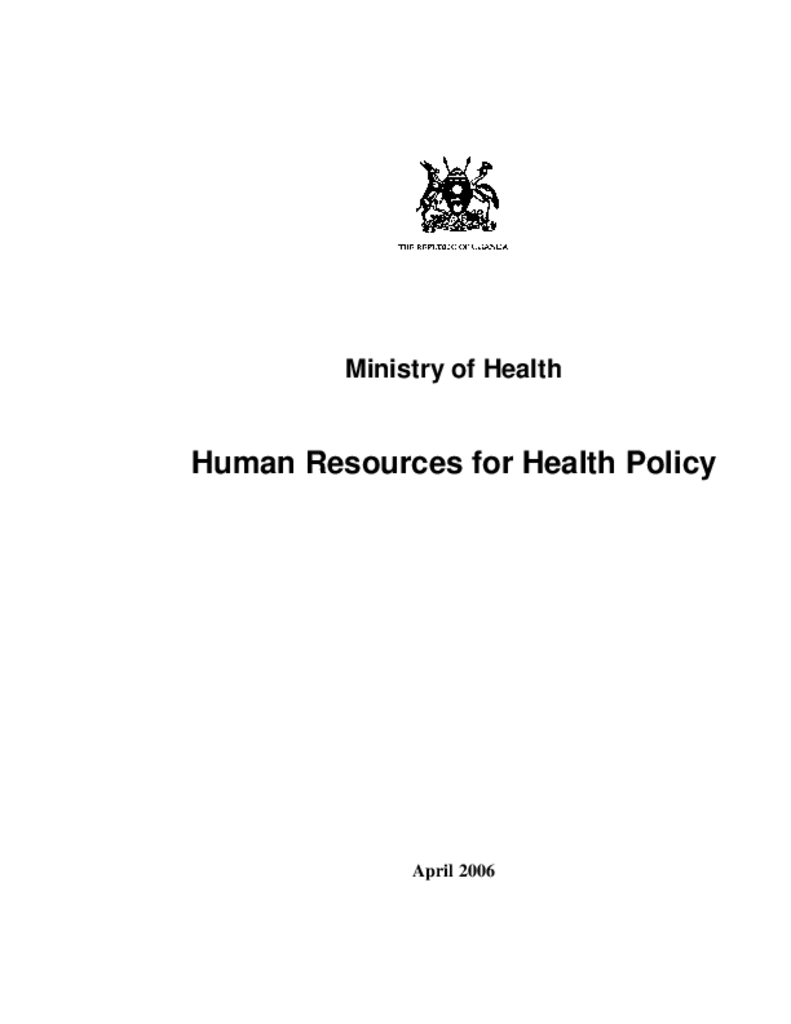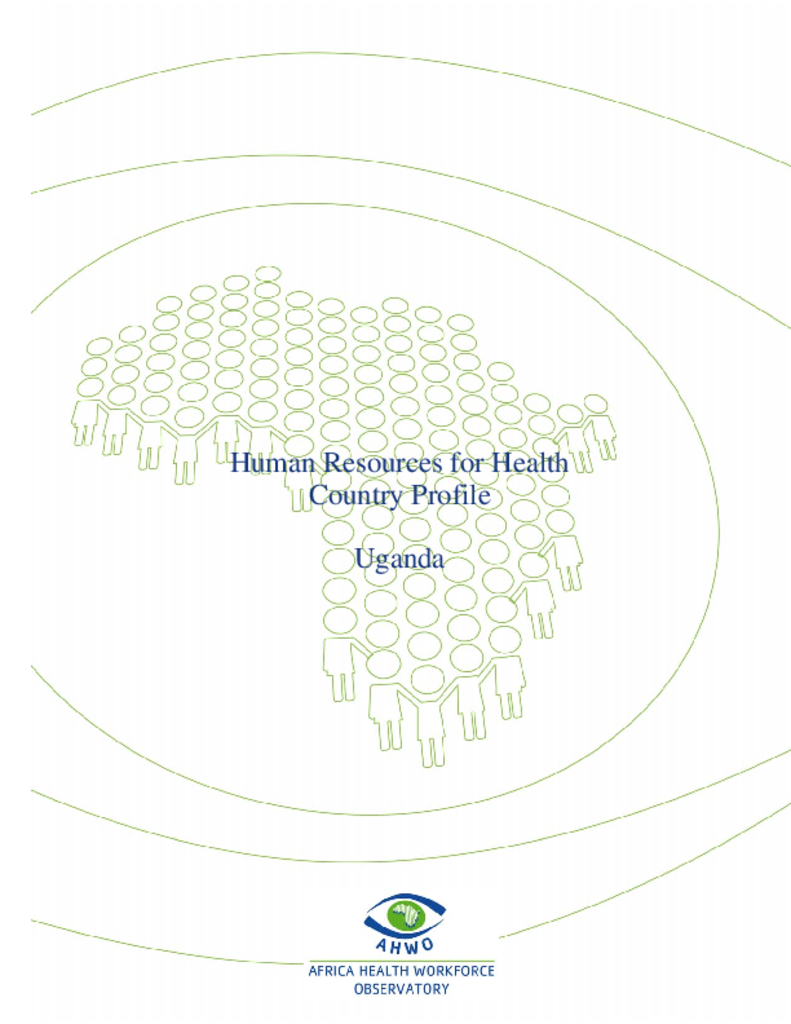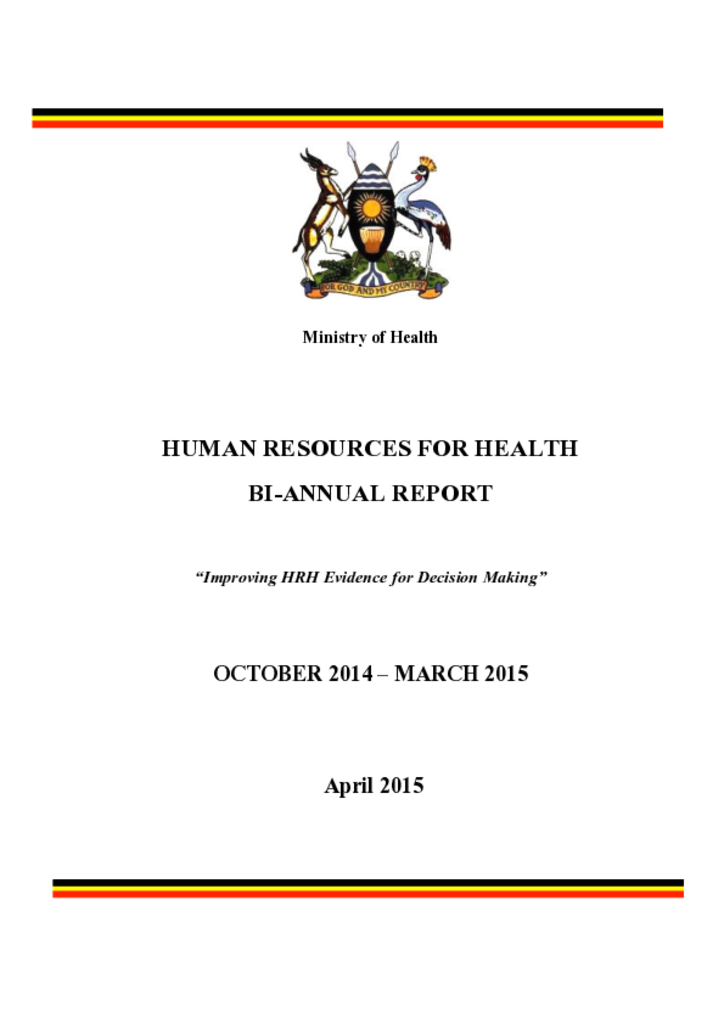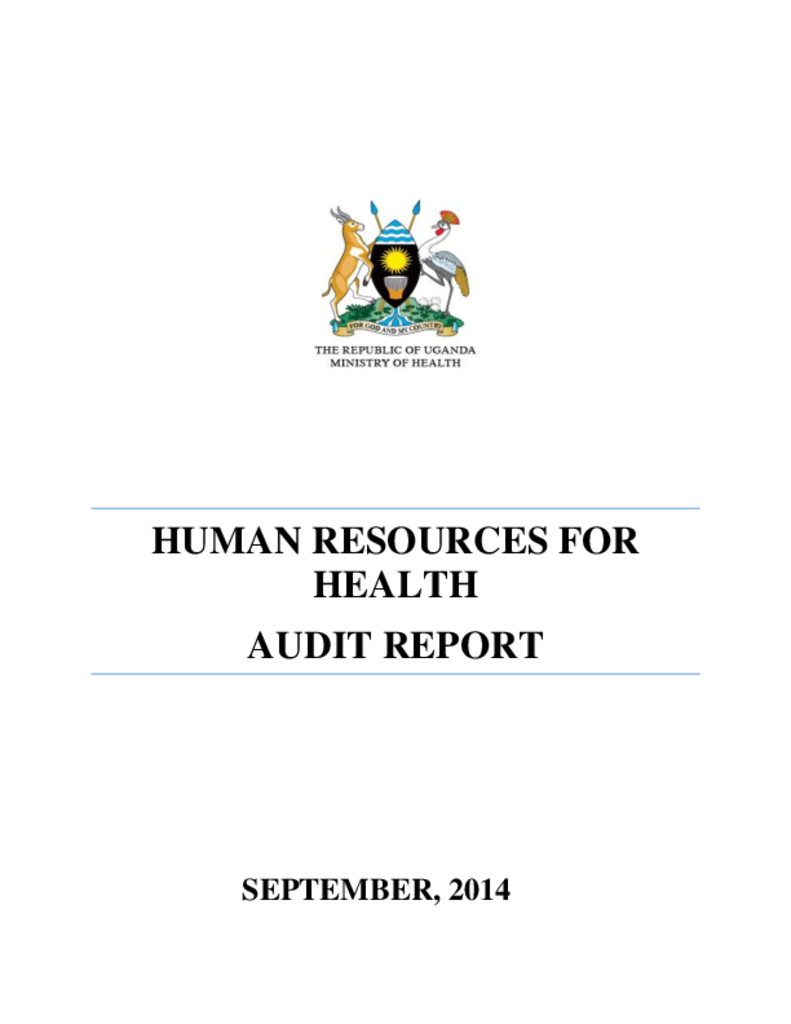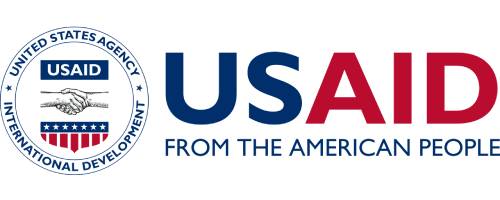This 2017/2018 Annual Human Resources for Health (HRH) Audit report is the 9th in series and was compiled by the Ministry of Health (Department of Human Resource Management) with support from USAID-funded Strengthening Human Resource for Health (SHRH) Activity that is implemented by IntraHealth International. The report provides an analysis of staffing levels based on the staffing norms at the different levels of health service delivery. The purpose of the audit is to update the available HRH information, provide analysis of the Human Resources for Health data to establish current staffing levels, gender composition and share with all
This Agenda for Global Action will guide the initial steps in a coordinated global, regional and national response to the worldwide shortage and mal-distribution of health workers, moving towards universal access to quality health care and improved health outcomes. It is meant to unite and intensify the political will and commitments necessary for significant and effective actions to resolve this crisis, and to align efforts of all stakeholders at all levels around solutions.
The present report provides a further update on progress towards the Sustainable Development Goals, taking into account the discussions of the Executive Board at its 140th session. Part I reports on global and regional progress made by Member States towards achieving Goal 3 (ensure healthy lives and promote well-being for all at all ages) and its interlinked targets, as well as other health-related Goals and targets. It is a product of the Secretariat’s support to Member States to strengthen reporting on the 2030 Agenda. Part II describes the progress made in implementing resolution WHA69.11.
This document provides information on the election that will take place in the Health Assembly to appoint the Director-General.
Workplace refers to any situation or location where an individual is involved in meaningful employment to earn a living. It covers both the formal and ingormal places. The health sector is loaded with a wide variety of situations where health and safety issues are crucial. It also has a wide range of staff categories wich creates a variety of hazards and exposure that can lead to an inrease in workplace related risk.
From their beginning, robots were intended to replace humans in the workplace. In fact, Karel Cˇapek, the Czech writer who invented the word robot in 1920, used the Slavic-language word for work, robota, to make it clear what these machines would be used for. Over the last century, machines have replaced workers in many tasks. On balance, however, technology has created more jobs than it has displaced. Technology has brought higher labor productivity to many sectors by reducing the demand for workers for routine tasks. And yet in doing so, it has opened doors to new sectors once imagined only in the world of science fiction
The purpose of this study was to identify and recommend strategies for tackling the underlying issues in the human resources for health (HRH) management process in Uganda with an eye towards addressing the HRH crisis.
In January 2017, the Executive Board at its 140th session adopted resolution EB140.R6, in which it recommended to the Seventieth World Health Assembly the adoption of the scale of assessments for the financial period 2018−2019 set out in that resolution.
The purpose of this policy document is to seek to ensure that Human Resources for Health, and their related functions are given the prominence, importance and resource allocations they require as the most crucial factor for health service delivery. It addresses a number of salient Human Resources for Health issues, identified through studies and broad consultation that require urgent attention to promote good performance, productivity and cost-effective practices.
In order to develop and share Human Resources for Health Information an idea of developing country observatories came up within WHO system development. One of the outputs of the Observatory is to ensure information sharing on country HRH situations. One way to present HRH information is to develop HRH country profiles.
This is the seventh HRH audit report and is intended to provide the health sector with up-to-date information on the current staffing in the health sector. It includes detailed human resources for health (HRH) staffing data on all public and, for the first time, private-not-for-profit (PNFP) facilities. Further analysis and data is presented on the gender composition of the health workforce, and staffing by cadres across levels in the health sector.
This audit report provides information on staffing levels and skill mix in the public health sector as of December 2013. It is aimed at providing human resource information regarding the current gap in staffing within GoU established structure in order to inform future HRH planning (recruitment and training). The analysis focuses on public sector (MOH) employees who are currently occupying established or approved positions within government-owned facilities or institutions
